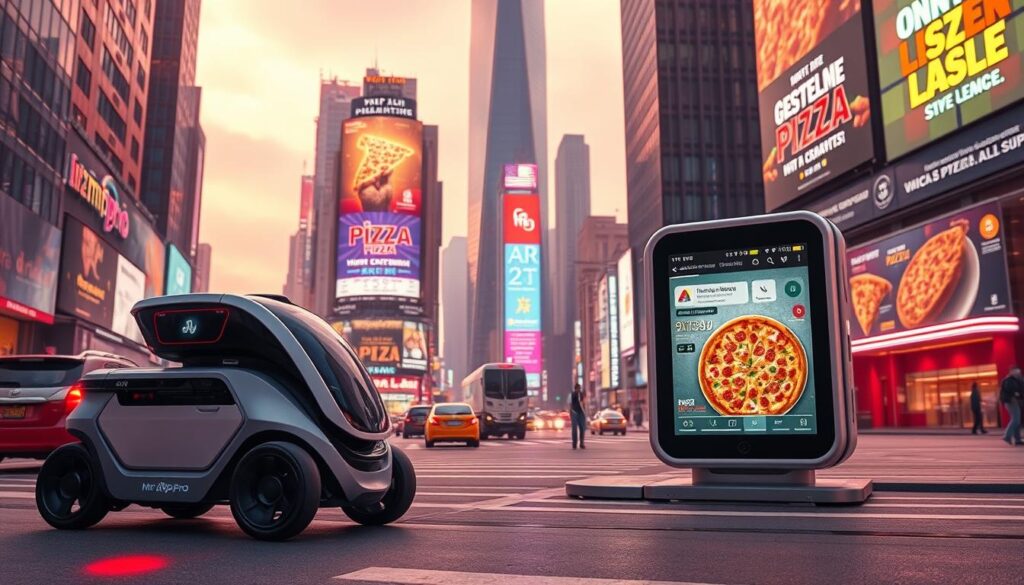
In the early 2000s, Domino’s Pizza faced a crisis that could have spelled disaster for the brand. With declining sales and negative customer feedback, the company was at a crossroads. A viral video criticizing the quality of their pizza further exacerbated the issue, leading to widespread consumer dissatisfaction. This was a turning point that demanded radical change.
The “Pizza Turnaround” campaign marked a bold shift in strategy. By acknowledging past mistakes publicly, Domino’s embarked on a journey to regain customer trust. This transparency, similar to how Facebook adapted to market needs while Myspace failed to innovate, showcased Domino’s commitment to improvement. The campaign featured direct customer feedback, highlighting issues like flavorless crusts and artificial-tasting cheese, which were addressed by reformulating their recipes.
Their efforts paid off. By focusing on customer feedback and product improvement, Domino’s managed to rebuild trust and eventually saw a surge in sales. This case study illustrates how transparency and innovation can lead to a successful brand turnaround, setting the stage for an interactive timeline challenge later in this article.
Background of Domino’s Crisis
The mid-2000s marked a challenging period for Domino’s Pizza, as the company faced a severe decline in consumer confidence. A viral video showcasing mishandled food sparked widespread outrage, leading to a significant drop in sales and trust. This incident highlighted the growing dissatisfaction with the quality of their products.
Viral Video Fallout and Consumer Backlash
The viral video, which showed employees mishandling food, caused a stir across social media and news outlets. Customers expressed their disgust, with many describing the pizza crust as tasting like cardboard. This backlash led to a noticeable decline in sales and a tarnished brand reputation.
Internal Reflective Focus on Quality Issues
Internally, Domino’s acknowledged the severity of the crisis. They took an unconventional approach by posting negative customer comments in their offices, ensuring that no one overlooked the feedback. This strategy underscored the company’s commitment to addressing the root causes of the problem.
The connection between the poor product quality and the overall brand crisis became clear. Customers were not just unhappy with the taste but also with the service and delivery times. Domino’s leadership recognized that without drastic changes, the company’s future would remain at risk.
This period set the stage for a much-needed transformation. By understanding the depth of the crisis, Domino’s could embark on a journey to regain trust and improve their offerings, ultimately leading to a successful turnaround.
Myspace vs. Facebook: A Lesson in Innovation
The rise and fall of social media giants like Myspace and Facebook offer valuable lessons for businesses. These platforms show how innovation and user-centric design can make or break a company.
Myspace’s Failure to Innovate
Myspace, once a leading social network, struggled to evolve. Its cluttered interface and lack of focus on user experience led to a decline. Unlike Facebook, Myspace didn’t adapt to changing user needs, ultimately losing its market lead.
Facebook’s Simplicity and User-Centric Approach
Facebook thrived by focusing on simplicity and user experience. Its clean design and continuous innovation kept users engaged. This approach is similar to how Domino’s Pizza reinvented itself through digital tools like the Pizza Tracker and mobile apps.
| Feature | Myspace | |
|---|---|---|
| Innovation Approach | Slow to adapt, cluttered interface | Streamlined, user-focused updates |
| Technology Adaptation | Limited mobile integration | Early adopter of mobile apps |
| Outcome | Decline in user base | Massive growth and market dominance |
Understanding this evolution is key for modern businesses. Innovation and simplicity can redefine user experience, as seen in Facebook’s success and Domino’s digital transformation.

For more insights on innovation in business, read about the rise and fall of Zynga.
Domino’s Pizza Turnaround: Rebuilding Trust Through Transparency
In 2009, Domino’s Pizza found itself at a critical juncture. Facing declining sales and a tarnished reputation, the company needed a bold strategy to regain consumer trust. The solution? A transparent approach that acknowledged past mistakes and showcased a commitment to improvement.
Admitting the Faults and Embracing Transparency
Dominos took an unconventional route with their “Pizza Turnaround” campaign. They openly admitted the shortcomings of their products and services, even featuring real customer feedback in their ads. This transparency was a risky move, but it paid off by reconnecting with their audience on a deeper level.
Reinventing the Core Product and Recipe
The company didn’t just talk about change—they made it happen. From reformulating their pizza recipes to improving delivery times, every aspect of the business was reexamined. Employees and executives worked tirelessly to create a better product, ensuring that the new menu reflected the feedback they had received.
The efforts were well worth it. By 2010, Domino’s saw a 10.3% increase in same-store sales, and their stock price rose by 130% within a year. This turnaround wasn’t just about numbers; it was about rebuilding trust and proving that Domino’s was committed to quality and innovation.

For more insights on how transparency can rebuild trust, visit this resource. To explore the services that supported this transformation, check out these offerings.
Digital Innovation in the Pizza Industry
Digital innovation has revolutionized how Domino’s Pizza operates, transforming the customer experience and streamlining service delivery. By embracing cutting-edge technology, the company has set a new standard in the pizza industry.
Online Ordering Breakthroughs and Technology Integration
The rise of online ordering has been a game-changer for Domino’s. Today, over 70% of their sales in the U.S. come from digital channels. The introduction of the Pizza Tracker, which allows customers to monitor their order’s progress in real-time, has significantly enhanced transparency and customer satisfaction. Additionally, Domino’s has pioneered innovations like the zero-click ordering app, enabling customers to place orders with just a few taps. This seamless integration of technology has made the ordering process faster and more convenient than ever.
Leveraging Data for Improved Customer Experience
Data has played a crucial role in refining Domino’s operations. By analyzing customer preferences and order patterns, the company has improved delivery times, reducing the average delivery time to under 30 minutes. This data-driven approach has also boosted order accuracy and personalized marketing campaigns, leading to a 3.9% growth in same-store sales in 2020. Furthermore, Domino’s has embraced emerging technologies, integrating with platforms like Apple Watch, Twitter, and Amazon Echo to allow customers to order pizzas in innovative ways.
These advancements have not only driven substantial digital sales growth but also positioned Domino’s as a leader in the global pizza industry. The company’s commitment to innovation underscores the importance of staying ahead in the competitive food sector.

The Role of Leadership in Crisis Management
Leadership played a pivotal role in steering Domino’s Pizza through its crisis. The company’s ability to navigate this challenging period hinged on strategic decisions and a commitment to transparency.
CEO Patrick Doyle’s Bold Decisions
CEO Patrick Doyle took charge during a critical juncture, implementing bold strategies to address the crisis. His direct approach involved publicly acknowledging the company’s shortcomings, a move that resonated with customers and set the stage for rebuilding trust.
Doyle’s leadership emphasized transparency, as seen in the “Pizza Turnaround” campaign, which featured real customer feedback. This risky strategy paid off, reconnecting with the audience and showcasing the brand’s commitment to improvement.

Employee Engagement and Frontline Empowerment
Empowering employees was crucial in implementing operational changes. Frontline staff engagement was key to restoring brand credibility, as employees were integral in delivering the improved products and services.
By focusing on employee engagement, Domino’s ensured that every team member understood the company’s commitment to quality and customer satisfaction. This collective effort led to significant improvements in delivery times and service quality, fostering customer trust.
For more insights on leadership in crisis management, visit this resource to explore similar strategies in different industries.
Engaging Your Audience with a Timeline Challenge
Take an interactive journey through Domino’s remarkable transformation. Identify the key moments that reshaped the brand and consider how different choices might have altered their success.
Spotting Key Turning Points in Domino’s Journey
Look for milestones like the “Our Pizza Sucks” campaign and the introduction of digital innovations. These events were crucial in their turnaround.
Interactive Challenge: When Could Innovation Have Changed the Game?
Ask yourself: Which innovation had the most significant impact? How might earlier adoption of technology have affected their success?
Imagine if Domino’s had launched their Pizza Tracker app sooner. Could it have accelerated their recovery? Compare this to the Myspace vs. Facebook story, where innovation was key to survival.
Discuss: What do customers value most in a fast-paced digital world? How did each turning point contribute to Domino’s success?

Conclusion
Dominos’ journey from crisis to success offers valuable lessons for businesses in Canada and beyond. By embracing transparency and innovation, the company transformed its brand and regained customer trust. This turnaround wasn’t just about improving food quality but also about revolutionizing how customers interact with the brand.
The introduction of digital tools like the Pizza Tracker and mobile apps played a crucial role in enhancing customer experience. These innovations not only boosted delivery efficiency but also contributed to significant sales growth. For instance, over 70% of Domino’s sales now come from digital channels, showcasing the power of technology in driving business success.
Leadership and employee engagement were key factors in this transformation. By empowering staff and focusing on customer feedback, Domino’s managed to rebuild trust and achieve remarkable results. The company’s stock growth of over 2000% since 2010 highlights the impact of these strategic changes.
As you reflect on Domino’s story, consider how transparency and innovation can apply to your own business. Whether it’s through improving your product, embracing new technologies, or engaging your team, these principles can lead to growth and customer loyalty. Take a moment to explore the interactive timeline challenge to gain deeper insights into this remarkable journey.

 Domino’s Pizza Turnaround: Rebuilding Trust Through Transparency
Domino’s Pizza Turnaround: Rebuilding Trust Through Transparency
0 Comment